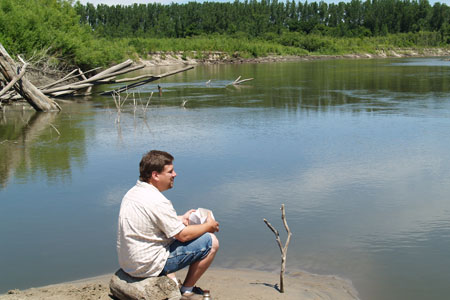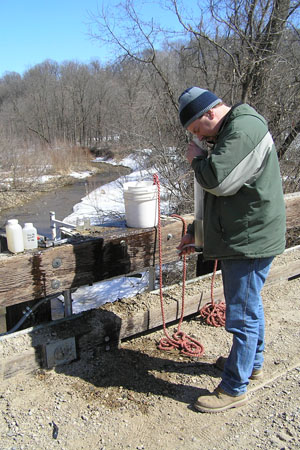Scott Matteson
Monitoring Hydrologist, MN Department of Agriculture
One of the brightest minds studying water quality in the Minnesota River Basin grew up next to Minneopa Creek and remains connected to this unique place. Scott Matteson went off to college at Minnesota State University, Mankato (MSUM) where he graduated with a Bachelor of Science degree in Ecology and Environmental Science. By that time Matteson had finished an internship with Sibley County and helped develop a Clean Water Partnership (CWP) grant application for High Island Creek Watershed, one of the major tributaries in the lower Minnesota River.
The Minnesota Pollution Control Agency awarded Sibley County this CWP grant a few months later and Scott got hired as the project coordinator. Over the next five years he worked for the Sibley Soil and Water Conservation Service completing two watershed assessment projects on High Island Creek and the Rush River. In this job Scott coordinate an extensive water quality monitoring program to determine the sources of water pollution in these two 100,000 plus acre watersheds. Next, Matteson headed back to MSUM to become part of the Water Resources Center (WRC), developing two Fecal Coliform Bacteria TMDLs including one for the Blue Earth River Watershed.
A few years later, Scott Matteson shifted his focus to coordinating the Minnesota River Monitoring Program, assessing water quality conditions of the mainstem and numerous tributaries. His work at the WRC also involved coordinating a number of cutting edge research projects trying to get a handle on fecal coliform bacteria sources in the basin. In September of 2012, Matteson left to take a water quality monitoring position with the Minnesota Department of Agriculture working on the Discovery Farm Program. This program is designed to conduct research on the field scale to see the effects of agricultural on waterbodies.
“When I first started in this field I knew the Minnesota River was regarded as one of the most polluted in the U.S., but I didn’t really understand why,” stated Scott Matteson. “I think that’s been one of the things that have driven my interest in water quality. To try to understand the pollution problems and sources and then hopefully be part of the solution.”
“Overall, trends on water quality in the Minnesota River suggest slight improvements for things like sediment concentration which is a good thing,” says Matteson. “However, other things we monitor like nitrate concentrations, appear to be rising. While our progress in improving water quality may be mixed, I think we are definitely moving in a positive direction in regards to understanding the pollution sources.”



